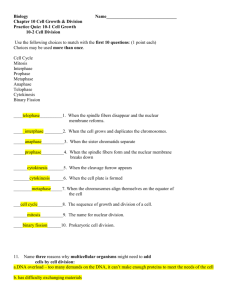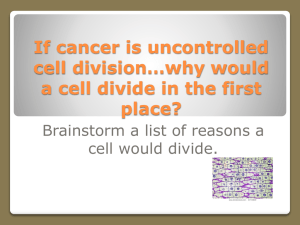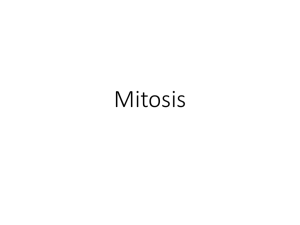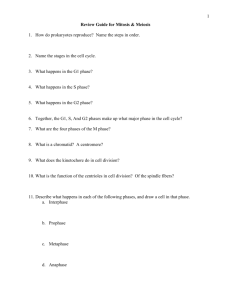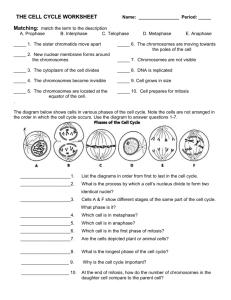BIOLOGY CHAPTER 10
advertisement
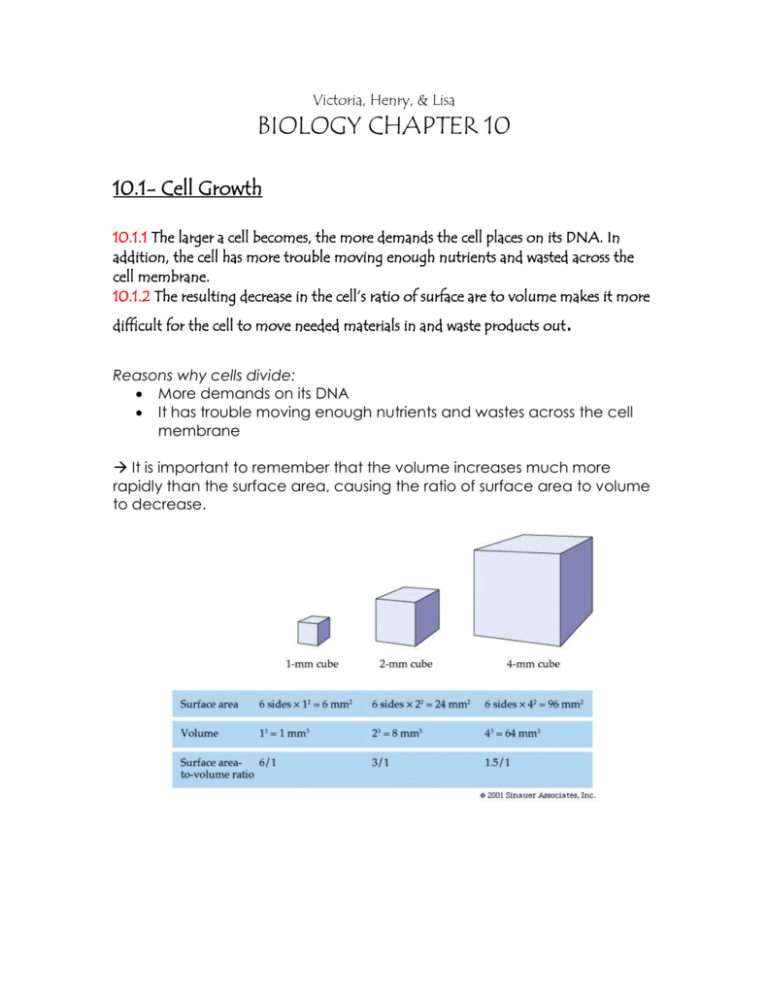
Victoria, Henry, & Lisa BIOLOGY CHAPTER 10 10.1- Cell Growth 10.1.1 The larger a cell becomes, the more demands the cell places on its DNA. In addition, the cell has more trouble moving enough nutrients and wasted across the cell membrane. 10.1.2 The resulting decrease in the cell’s ratio of surface are to volume makes it more difficult for the cell to move needed materials in and waste products out . Reasons why cells divide: More demands on its DNA It has trouble moving enough nutrients and wastes across the cell membrane It is important to remember that the volume increases much more rapidly than the surface area, causing the ratio of surface area to volume to decrease. 10.2- Cell Division 10.2.1. During the cell cycle, a cell grows, prepares for divisions, and divides to form two daughter cells, each of which then beings the cycle again. 10.2.2 Biologists divide the envents of mitosis into four phases: prophase, metaphase, anaphase, and Telophase INTERPHASE: G1 Phase: Cell Grows (increase in size and synthesize new proteins and organelles) S Phase: DNA replicates (Synthesis of DNA molecules takes place) G2 Phase: Shortest phase; many of the organelles and molecules required for cell division are produced. MITOSIS: Prophase: chromosomes become visible. The centrioles separate and take up positions on opposite sides of the nucleus. Metaphase: The chromosomes line up across the center of the cell. Each chromosome is connected to a spindle fiber at its centromere. Anaphase: The sister chromatids separate into individual chromosomes and are moved apart. Telophase: The chromosomes gather at opposite ends of the cell and lose their distinct shapes. Two new nuclear envelopes will form. CYTOKINESIS: Usually occurs at the same time as Telophase The cell membrane is drawn inward until the cytoplasm is pinched into two nearly equal parts 10.3- Regulating the Cell Cycle 10.3.1 Cyclins regulate the timing of the cell cycle in eukaryotic cells 10.3.2 Cancer cells do not respond to the signals the regulate the growth of most cells When cells come into contact with other cells, they respond by not growing A protein called cyclin is used to regulate the cell cycle in eukaryotic cells Internal Regulators are proteins that respond to events inside the cell External regulators are proteins that respond to events outside the cell Cancer is a disorder in which some of the body’s own cells lose the ability to control growth



